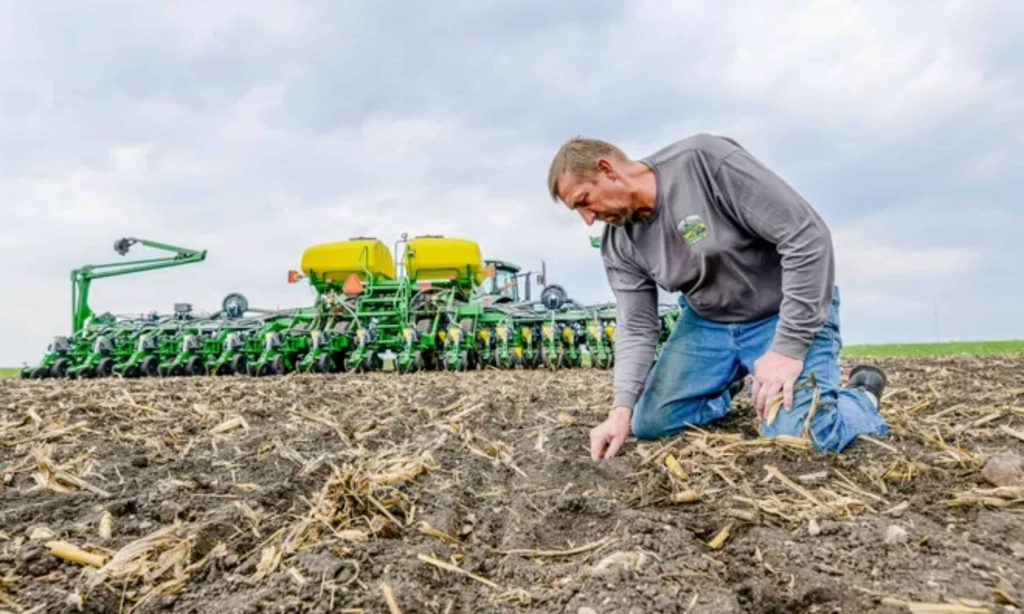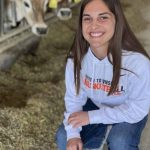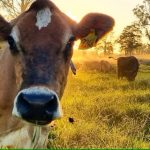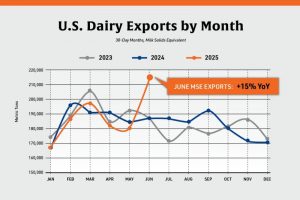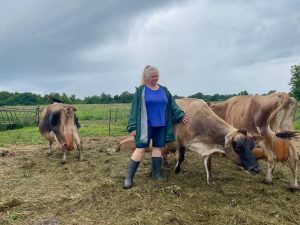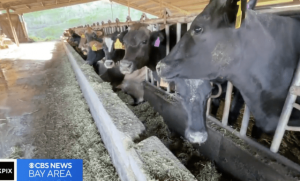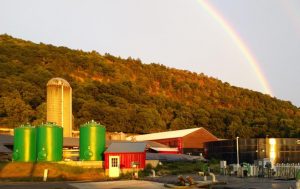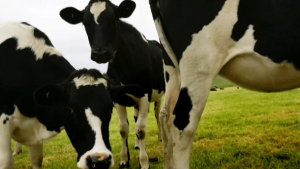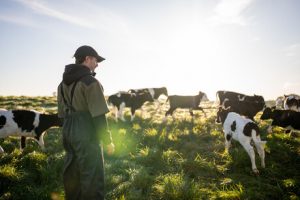
Dairy farmers have made progress towards lowering emissions and conserving natural resources. As the climate crisis worsens and the world’s population grows, U.S. dairy has accelerated its efforts – setting ambitious environmental goals, initiating partnerships, funding research pilots and championing new practices and technologies.
Lori Captain, executive vice president of global sustainability, recently answered some questions including where the dairy industry is headed, what makes a cow’s stomach so incredible, and why some people are starting to “see dairy differently.”
1. To begin, for those who may be unaware of U.S. dairy’s sustainability efforts, what should they know about your work to-date?
In 2008, the U.S. dairy industry was the first in the food agricultural sector to conduct a full lifecycle assessment (LCA) at a national scale. That LCA, which focused on fluid milk, estimated that U.S. dairy accounts for approximately 2 percent of total greenhouse gas (GHG) emissions. In recent decades, thanks to innovative farming and feed production practices, the environmental impact of producing a gallon of milk in 2017 required 30 percent less water, 21 percent less land and a 19 percent smaller carbon footprint than it did in 2007. That’s equivalent to the amount of carbon dioxide removed from the atmosphere by half a million acres of U.S. forest.
Still, we know we can do more. In 2020, we set aggressive goals to collectively achieve GHG neutrality, optimize water use and improve water quality by 2050.

2. How exactly does a dairy cow emit GHGs?
Dairy cows emit methane in two ways, the first of which is directly from their mouths. Enteric methane is produced in the cow’s stomach through the digestion process and is released into the atmosphere through silent burps.
The second source is manure. Methane from manure can be generated under certain conditions, such as during storage, before it can be further used for fertilizing crops.
3. What are farmers doing to minimize the impact of cow burps?
Before I answer that question, it’s worth noting that we often call dairy cows “the original recyclers” because up to one-third of a dairy cow’s diet comes from byproducts. Think about the different types of waste generated from places like bakeries, breweries and other food manufacturers – almond hulls, cottonseeds, citrus pulp and peel and corn grain – these are all delicious additions to a dairy cow’s daily feed. So, in essence, dairy cows are taking foods we can’t eat, which would otherwise cause methane emissions in landfills, and converting them into something we can eat – milk and other dairy products.
The reason they’re capable of this is due to their stomach’s rumen ecosystem, putting the cow in a specialized class of mammals when it comes to digesting abilities. Yet amid the recycling benefits, the methane emitted by silently burping cows is one of the biggest, most complex sustainability issues for dairy, especially since it’s part of the animal’s natural digestive process.
To mitigate this, we’re doing research to identify and improve technologies like additives and genetic traits. In fact, a lot of progress has been made with feed additives, which can improve digestibility and by some estimations, could reduce methane emissions by as much as 30 percent in the coming years. We’re also encouraged by research into technologies like sensors, robots and artificial intelligence to monitor emissions.
4. If dairy’s sustainability challenge is so complex, should people just stop eating and drinking dairy products altogether?
A recent modeling study explored this exact question – what would happen if we did away with dairy farms and dairy cows altogether? It turns out, what amounts to minimal environmental gain would come at significant expense to human health and nutrition.
